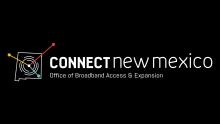New Resource: Our New Community Network Map Shows the Explosion of Publicly Owned Networks
In 2011, we built our first map showing where community-owned networks were located across the United States. At the time, it aimed to illustrate what we knew to be true: that more than 100 communities were choosing to fill the local broadband marketplace by building and/or operating their own networks.
The goal was twofold: to highlight the work local governments were doing to fix the broken broadband market in their communities, and collect in one place the breadth, depth, and variety of community-owned networks. Over time, we added Tribal networks, and those operated by telephone and electric cooperatives.
Today we release a new version of our Community Networks Map, showing where municipal networks operate across the United States and how they are bringing new, more affordable service and competition to communities around the country. From 130 networks covering a similar number of communities in 2011, the new map shows that municipally owned Internet service providers now total more than 400 networks covering more than 700 communities. A third of those networks provide high-speed Internet access to nearly every address in the communities where they are located.















